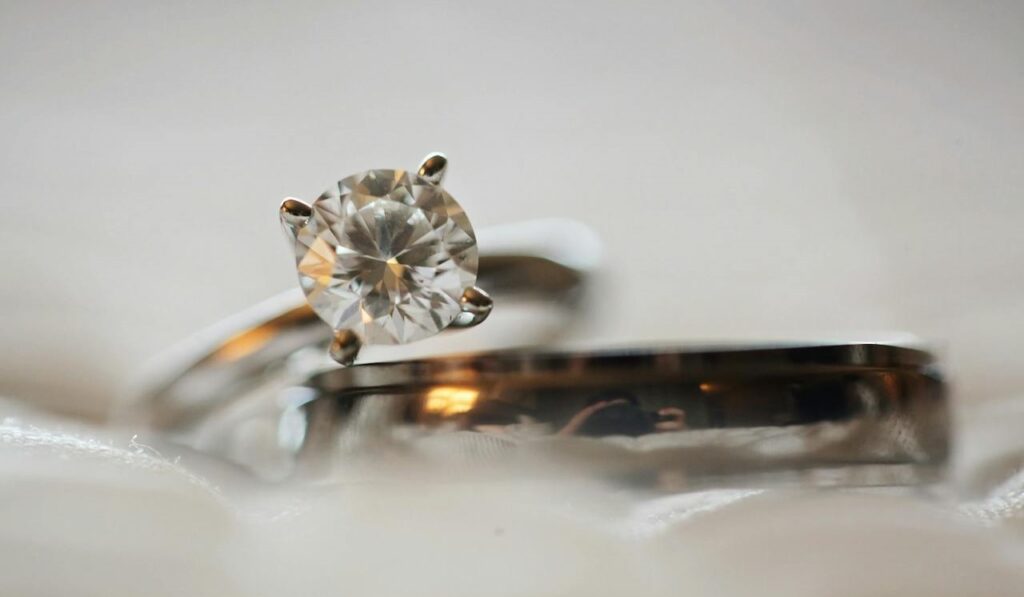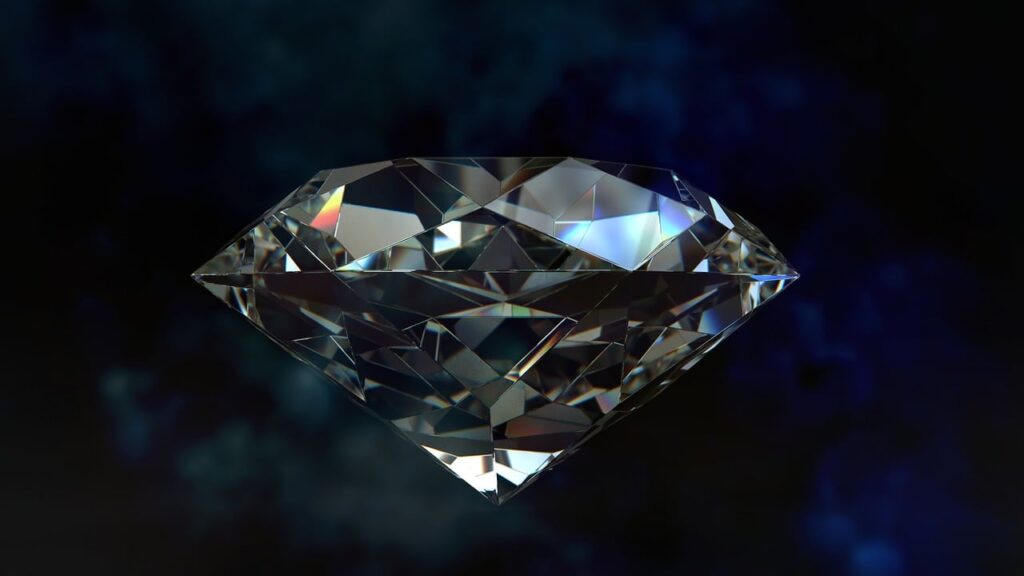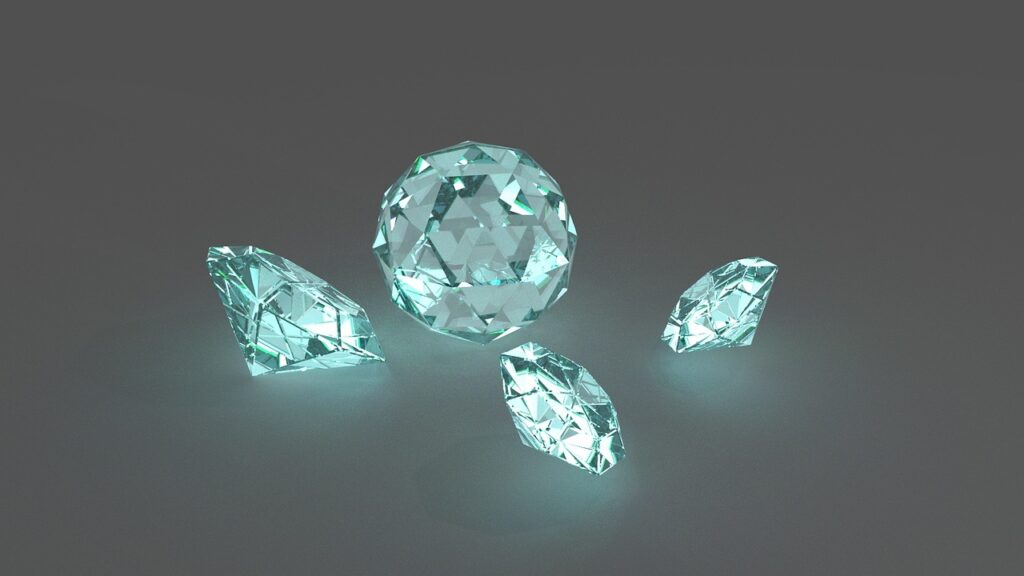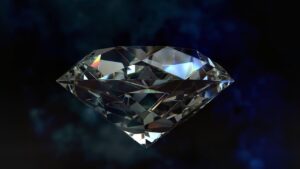Why Are Diamonds So Expensive? The Truth Behind Their High Price
Diamonds are one of the most sought-after gemstones in the world. They are known for their exceptional beauty, durability, and rarity. However, diamonds are also one of the most expensive gemstones, with prices that can range from a few hundred dollars to millions of dollars per carat. So why are diamonds so expensive?

One reason is that diamonds are rare. Most diamonds are found in mines in Africa, Russia, Canada, and Australia. The supply of diamonds is controlled by a small number of companies, such as De Beers, which can manipulate the market to keep prices high. Additionally, the process of mining and cutting diamonds is expensive, requiring heavy machinery and skilled labor. The cost of these operations is passed on to consumers, making diamonds more expensive than other gemstones.
The Rarity of Diamonds
Diamonds are considered one of the rarest minerals on Earth. They are formed deep within the Earth’s mantle, under extreme heat and pressure. The rarity of diamonds is due to the fact that they are not easily found on the Earth’s surface.
Geological Formation
Diamonds are formed from carbon atoms that have been subjected to high temperatures and pressure for millions of years. They are created deep within the Earth’s mantle, where temperatures can reach up to 2,200 degrees Fahrenheit and pressure can be over 725,000 pounds per square inch. This extreme environment causes the carbon atoms to bond together to form diamonds.
Mining Difficulties
Mining diamonds is a difficult and expensive process. Most diamonds are found in remote locations, such as in the depths of the ocean or in the frozen tundra of the Arctic. The mining process involves digging deep into the Earth’s surface to find the diamond-bearing rock, which is then extracted and processed to extract the diamonds. This process is both time-consuming and expensive, requiring heavy machinery and skilled labor.
Furthermore, the mining process is also highly regulated to ensure that the diamonds are ethically sourced and conflict-free. This adds additional costs to the mining process, as companies must comply with strict regulations and ensure that their supply chain is transparent and ethical.
Overall, the rarity of diamonds, combined with the difficulty and expense of mining them, contributes to their high price. While there are other minerals that are rarer than diamonds, such as red beryl and painite, diamonds remain one of the most valuable and sought-after minerals in the world.
Market Demand
Diamonds are one of the most expensive gemstones in the world, and one of the reasons for their high price is market demand. For centuries, diamonds have been a symbol of power, wealth, and status, and they continue to hold a significant cultural significance in many societies.
Cultural Significance
The cultural significance of diamonds can be traced back to ancient times. In India, for example, diamonds were believed to bring good luck and protect against evil spirits. In Europe, diamonds were worn by royalty as a symbol of their power and wealth. Today, diamonds are still associated with luxury and status, and many people are willing to pay a premium for them.

Marketing Influence
Another factor that contributes to the high cost of diamonds is marketing influence. The diamond industry has invested heavily in marketing campaigns that promote the idea that diamonds are the ultimate symbol of love and commitment. The famous slogan, “A Diamond is Forever,” was created by De Beers in the 1940s and has since become one of the most iconic advertising campaigns in history. The marketing campaigns have been so successful that many people now believe that a diamond engagement ring is a necessary part of any marriage proposal.
In conclusion, the high cost of diamonds can be attributed to a combination of factors, including market demand, cultural significance, and marketing influence. While there are other gemstones that are rarer and more valuable than diamonds, none have the same cultural significance or marketing power. As a result, diamonds continue to be one of the most expensive and sought-after gemstones in the world.
Economic Factors
Diamonds are one of the most expensive gemstones in the world, and there are several economic factors that contribute to their high price. Two of the most significant factors are the controlled supply and price stability.
Controlled Supply
The supply of diamonds is tightly controlled by a small number of companies, such as De Beers, which have a near-monopoly on the diamond market. According to Diamond101, these companies limit the supply of diamonds to keep prices high. They do this by stockpiling diamonds and releasing them into the market slowly, which creates an artificial scarcity and drives up demand.
In addition, diamond mining is a complex and expensive process that requires significant investment in equipment, labor, and infrastructure. This means that the cost of producing diamonds is high, which further contributes to their high price.
Price Stability
Another factor that contributes to the high price of diamonds is their price stability. Unlike other commodities, such as gold or oil, the price of diamonds is relatively stable and does not fluctuate significantly over time. This makes diamonds a reliable investment for buyers, which further drives up demand and prices.
According to WalletHub, the stability of diamond prices is due in part to the fact that diamonds are not traded on public exchanges. Instead, they are sold through private channels, which limits the flow of information and reduces price volatility.
Overall, the controlled supply and price stability are two key economic factors that contribute to the high price of diamonds. While these factors may make diamonds more expensive than other gemstones, they also make them a valuable investment for buyers who are looking for a reliable and stable asset.
Quality and Grading
When it comes to diamonds, quality is a significant factor that contributes to their high price. The quality of a diamond is determined by the 4 Cs: cut, clarity, color, and carat weight.
The 4 Cs
Cut: The cut of a diamond refers to its proportions, symmetry, and polish. A well-cut diamond will have excellent fire and brilliance, making it more valuable. Poorly cut diamonds, on the other hand, will have less sparkle and appear dull.
Clarity: The clarity of a diamond refers to the presence or absence of inclusions and blemishes. Inclusions are internal flaws, while blemishes are external flaws. The fewer inclusions and blemishes a diamond has, the higher its clarity grade and value.
Color: The color of a diamond is graded on a scale from D (colorless) to Z (light yellow or brown). The less color a diamond has, the more valuable it is. However, some fancy-colored diamonds, such as pink or blue, can be worth more than colorless diamonds.
Carat weight: Carat weight refers to the size of a diamond. One carat is equivalent to 0.2 grams. Larger diamonds are rarer and more valuable than smaller diamonds.
Certification Process
Diamonds are certified by independent gemological laboratories, such as the Gemological Institute of America (GIA) or the American Gem Society (AGS). These labs use sophisticated equipment and trained professionals to grade diamonds based on the 4 Cs.
A diamond’s certification is an important factor in determining its value and authenticity. A certified diamond is guaranteed to be natural and untreated, and its quality can be verified by anyone.
In conclusion, the quality and grading of diamonds play a significant role in their high price. The 4 Cs and certification process are essential factors in determining a diamond’s value and authenticity.

Industrial Uses and Value
Diamonds have been used in various industrial applications for several decades. They are highly valued for their unique properties, which cannot be matched by any other material. Industrial diamonds are used in a variety of industries, including construction, mining, and manufacturing.
One of the primary uses of industrial diamonds is in the manufacturing of cutting tools. Diamonds are extremely hard and have excellent thermal conductivity, making them ideal for cutting and drilling through tough materials such as metal and concrete. They are also used in saw blades and grinding wheels, where their durability and resistance to wear make them highly effective.
In addition to their use in cutting tools, diamonds are also used in the electronics industry. They are used to make high-performance semiconductors, which are essential components in electronic devices such as computers and smartphones. Diamonds are also used as heat sinks in electronic devices, where their high thermal conductivity helps to dissipate heat and prevent damage to sensitive components.
The value of industrial diamonds is derived from their unique properties and the high cost of production. Industrial diamonds are typically produced through a process called high-pressure high-temperature (HPHT) synthesis, which involves subjecting carbon to extremely high temperatures and pressures. This process is expensive and time-consuming, which contributes to the high cost of industrial diamonds.
In conclusion, the industrial uses of diamonds are numerous and varied. They are highly valued for their unique properties and are essential components in many industries. The high cost of production contributes to the high value of industrial diamonds, making them a valuable and sought-after commodity.
Historical Context
Diamonds have been highly valued throughout history for their beauty and rarity. The first diamond engagement ring was given by Archduke Maximilian of Austria to Mary of Burgundy in 1477. Since then, diamonds have become a symbol of love and commitment, and their popularity has continued to grow.
However, diamonds did not always have the same value as they do today. In fact, diamonds were not even considered rare or valuable until the late 1800s. This changed when large diamond deposits were discovered in South Africa, which flooded the market and caused the price of diamonds to plummet.
In response, the De Beers company, which controlled the majority of the world’s diamond supply, implemented a marketing campaign to increase demand for diamonds. This included creating the slogan “A Diamond is Forever” in 1947, which helped cement the idea that diamonds were a necessary part of engagement and marriage.
Today, diamonds continue to be one of the most expensive gemstones on the market. The price of a diamond is determined by the 4 Cs: carat weight, cut, clarity, and color. The larger and more flawless a diamond is, the more expensive it will be. Additionally, diamonds that are certified by reputable organizations such as the Gemological Institute of America (GIA) are also more expensive.
Despite the high cost of diamonds, they remain a popular choice for engagement rings and other jewelry. Their beauty and rarity continue to captivate people, making them a timeless symbol of love and commitment.
Future Trends and Sustainability
Diamonds, both natural and lab-grown, are facing increasing scrutiny with regard to their environmental impact. As a result, the future of the diamond industry is likely to be shaped by sustainability and ethical concerns.
One promising trend in the diamond industry is the development of lab-grown diamonds. These diamonds are created in a lab, using advanced technology to replicate the conditions that create natural diamonds. Lab-grown diamonds are often more affordable than natural diamonds, and they are also more sustainable, as they do not require the same level of environmental impact as traditional diamond mining.
Another trend is the increasing demand for ethically sourced diamonds. Consumers are becoming more aware of the environmental and social impact of diamond mining, and are demanding that the industry become more transparent and accountable. As a result, many diamond companies are now working to ensure that their diamonds are ethically sourced, and are taking steps to reduce their environmental impact.
To address concerns about sustainability and ethics, the diamond industry is also exploring new technologies and practices. For example, some diamond companies are using blockchain technology to create a more transparent and traceable supply chain, which can help to ensure that diamonds are ethically sourced and conflict-free.
Overall, the future of the diamond industry is likely to be shaped by sustainability and ethical concerns. As consumers become more aware of the environmental and social impact of diamond mining, the industry will need to adapt and change in order to meet these new demands.




